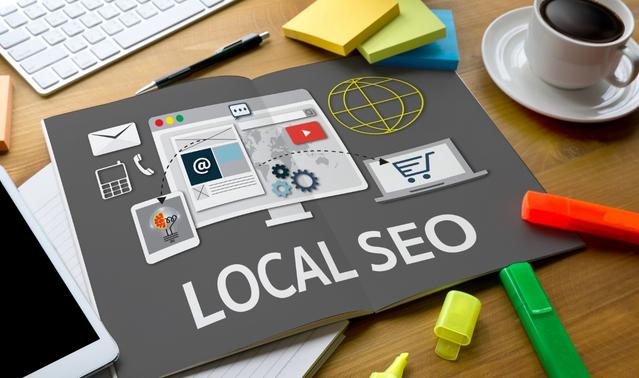Introduction
On-page SEO is an important aspect of
local SEO California, as it helps to ensure that your website is optimized for search engines to show local search results. On-page SEO involves optimizing various elements of a website, including title tags, meta descriptions, content, images, and URLs. Other on-page optimization techniques include optimizing local business citations and creating location-specific content. To maximize the effectiveness of on-page SEO, it is important to target your local keywords and use them throughout your website. This guide will discuss the key elements of On-Page SEO and provide tips for optimizing your website.
What is On-Page SEO?
On-Page SEO is the practice of optimizing a website’s content and code for search engine rankings. By optimizing the content and HTML of a website, search engine algorithms are able to better understand what a website is about and how it should be ranked in search engine results.
Key Elements of On-Page SEO
On-Page SEO has four main components: content optimization, HTML optimization, image optimization, and URL optimization.
Content optimization is the process of optimizing the content of a website to make it more relevant to search engine algorithms. This can be done by ensuring that the content is keyword-rich, well-structured, and informative. It is also important to make sure that the content is written in a natural-sounding language and is free from any spelling or grammatical errors.
HTML optimization is the process of optimizing the HTML code of a website to make it more accessible to search engine algorithms. This can be done by reducing the HTML code size, removing any unnecessary code, and ensuring that the code is properly structured and well-formatted.
Image optimization is the process of optimizing the images used on a website to make them more visible to search engine algorithms. This can be done by using descriptive filenames, properly formatting the images, and using the appropriate image file types. Images play a crucial role in on-page SEO. Ensure that images are optimized for web use, with appropriate file sizes and alt tags that accurately describe the image and include relevant keywords.
URL optimization is the process of optimizing the URLs of a website to make them more visible to search engine algorithms. This can be done by using descriptive keywords in the URLs and ensuring that they are properly structured and well-formatted.
Internal linking is the process of linking from one page of a website to another. This is important for improving the visibility of a website in search engine results. It is also important for improving the user experience on the website by making it easier for visitors to navigate the website.
On-Page Best Practices to Improve your Local SEO California Results.
- Title Tag:
The title tag is an important element of on-page SEO. It should be unique and accurately reflect the content of the page, while also including relevant local keywords. The title tag should be no more than 60 characters in length and should be placed in the head section of the HTML code.
- Meta Description:
The meta description is a short summarized version of the content of a web page that appears in search engine results. It should be no more than 155 characters in length and should include relevant local keywords and a compelling call to action.
- Header Tags
Header tags, such as H1, H2, and H3, help structure the content of a page and make it easier for both users and search engines to understand the content. Header tags should be used to create an outline for the content and should include relevant local keywords.
- URL Structure:
The URL structure of a page should be simple, intuitive, and include relevant local keywords. Avoid using complex, dynamic URLs that are difficult to understand and remember.
- NAP (Name, Address, Phone) Consistency:
Your business name, address, and phone number (NAP) should be consistent across all of your online listings, including your website, local citations, and business directories. This helps search engines and users confirm your business location and improve your chances of appearing in local search results.
- Content Quality:
The content of a page should be high-quality, relevant, and provide value to the user. It should also be well-written, engaging, and optimized for relevant keywords.
- Local Keywords:
Targeting relevant local keywords in your content can help improve your visibility in local search results and give you better results for your local SEO California efforts. This includes researching local search terms and incorporating them into your title tag, meta description, header tags, and content.
- Google My Business:
Google My Business is a free tool that allows you to manage your business information, including your NAP, on Google Maps and in Google search results. Optimizing your Google My Business listing with accurate information, photos, and customer reviews can improve your chances of appearing in local search results.
- User Experience:
The user experience is a critical aspect of on-page SEO. Ensure that your website is easy to navigate, fast, and provides a positive user experience.
- Mobile Optimization:
Ensure that your website is mobile-friendly, as more and more users are accessing the internet from their mobile devices. This can improve your user experience and help boost your local SEO efforts.
- Analytics and Monitoring:
Finally, it’s important to monitor your on-page SEO efforts using analytics tools, such as Google Analytics, to track your progress and identify areas for improvement.
Conclusion
On-Page SEO is an important part of improving the visibility of a website in search engine results. It is important to optimize the content, HTML, images, and URLs of a website to make it more visible to search engines and visitors. Following these tips and strategies can help to ensure that your website is properly optimized to achieve the best possible search engine rankings.
If you are looking for a reliable SEO agency for
local SEO California, get in touch with Sacred Cow Studios.
